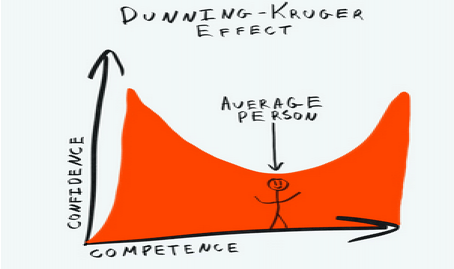The Dunning-Kruger effect is a cognitive bias that describes a phenomenon in which individuals with low ability or knowledge in a particular domain tend to overestimate their competence, while those with high ability or expertise may underestimate their competence. This concept can be applied to day trading, which involves buying and selling financial instruments like stocks, currencies, or commodities within the same trading day:
- Overconfident Newbies: Some rookies in day trading think they’re financial wizards, making risky trades with a wink. Reality check: It’s often a recipe for disaster.
2. Unrealistic Dreams: They believe they’ll swim in pools of cash by lunchtime. But the market isn’t that generous, and dreams can go up.
3. Clueless about Risk: Novices may neglect basic risk management, like gambling without a seatbelt. That’s how accounts go from green to red in seconds.
4. Humility Over Hindsight: As traders gain experience, they often find out they didn’t know it all. It’s better to learn from their comedy of errors.
For all “wannabe” traders out there, a word of advice to mitigate the Dunning-Kruger effect in day trading, it’s crucial to:
A. Educate yourself: Invest time in learning about financial markets, trading strategies, and risk management techniques. This will help you make more informed decisions.
B. Practice with a demo account (aka “paper trading”): Before risking real money, use a demo trading account to gain experience and test your strategies without financial consequences.
C. Seek mentorship: Learn from experienced day traders or seek advice from professionals who can provide valuable insights and guidance.
D. Maintain humility: Continuously evaluate your performance and adapt your strategies based on your actual results. Don’t let overconfidence blind you to your limitations.
E. Manage risk: Develop and stick to a risk management plan that includes setting stop-loss orders, diversifying your trades, and using appropriate position sizing.

